CBSE Class 12 Biology Chapter 8 Revision Notes Part 1
Chapter 8: Human Health and Diseases Revision Notes Part 1
Multiple Choice Questions
-
During an allergic response _________ antibody is generated.
-
Which of these is an example of a congenital disease? _________
-
__________ is a primary lymphoid organ.
-
_______ is used to make the Hepatitis B vaccine.
-
An infection disease spread from one person to another is also known as ____________
Reproductive Health
-
Health entails disease-free living and physical fitness.
-
Health is dependent on a few factors, and some of them are listed below:
i. Genetic diseases that are inherited often affect an individual’s potential health ii. Microbes or other creatures that cause disease iii. Lifestyle choices – includes the foods and beverages we consume, physical activity levels, and sleep patterns
Disease types
There are two sorts of diseases: infectious and non-infectious.
Congenital diseases
- Genetic disorders present at birth are known as congenital diseases.
- This might result from a gene mutation, chromosomal abnormality, or environmental factors.
- Defects in the chromosome and genes are passed on to the following generation.
- Haemophilia, color blindness, Down syndrome, Turner’s syndrome, and other conditions are examples.
Acquired diseases
Diseases acquired during a lifetime are acquired diseases.
- Communicable: An infectious sickness is spread from one person to another.
- Non-communicable: Illness does not spread by infection.
- Deficiency disease: Anemia, kwashiorkor, beriberi, diabetes, and other deficiencies are caused by a lack of a key vitamin, enzyme, or hormone.
- Allergies: are a type of hypersensitivity to external particles such as pollen and dust.
Immunity and Related Disorders
- Immunity refers to the body’s ability to defend itself against pathogens and other objects.
- The immune system protects our bodies against infection.
Immunity can be divided into different categories:
Innate immunity
The immunity that is present from birth is known as innate immunity. There are four sorts of barriers in the human body’s defense mechanism.
- Skin and mucous covering of respiratory, gastrointestinal, and urinary tract epithelial linings are physical barriers.
- Saliva, tears, or stomach acid act as physiological barriers.
- Neutrophils, monocytes, and natural killer lymphocytes are cellular barriers.
- Interferons released by virus-infected cells form cytokine barriers.
Acquired immunity
Acquired immunity is pathogen-specific immunity that we develop throughout our lives.
- After the initial interaction with a virus, the low-intensity primary reaction kicks in.
- Due to the memory of the initial reaction, a recurrent infection causes a substantially increased secondary response or anamnestic response.
- B-lymphocytes produce antibodies in response to foreign antigens.
- Antibodies (H2L2) are Y-shaped protein molecules with two light and two heavy peptide strands.
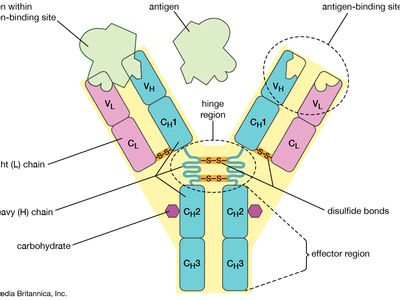
Source: Antibodies
- Humans have five different forms of antibodies or immunoglobulins: IgG, IgM, IgD, IgA, and IgE.
- IgG is the most prevalent antibody in the blood, and it defends a fetus while its immunity builds.
- IgA is plentiful in breast milk and colostrum, the yellowish fluid released at the beginning of breastfeeding.
- IgE has a role in allergic reactions.
- The humoral immune response is an antibody-mediated reaction.
- Cell-mediated response, or CMI, is regulated by T-lymphocytes.
- After transplantation, the cell-mediated response is crucial for discriminating among self and non-self and graft rejection.
Active immunity
- Antibodies are created in the host’s body in response to antigen, and it takes time to respond effectively.
- Vaccination, which involves injecting an attenuated pathogen, is an example of active immunity.
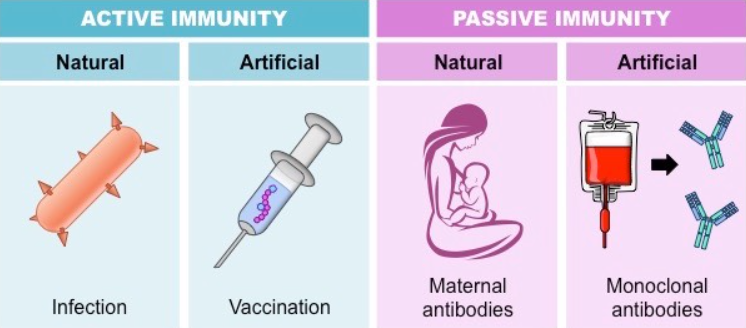
Passive immunity
- Passive immunity is defined as providing pre-made antibodies to elicit a rapid response against a disease.
- Passive immunization is achieved by injecting antitoxin for snakebite, including antibodies against the venom.
- The use of recombinant DNA technology has aided in large-scale manufacturing vaccines. For example, yeast is used to make the hepatitis B vaccine.
Allergies
- Pollens, dust, mites, and other environmental antigens elicit an exaggerated immunological response.
- During an allergic response, the IgE antibody is generated.
- During an allergic response, the mast cell produces histamine and serotonin.
- Antihistamines, adrenaline, and steroids all help to alleviate allergy symptoms.
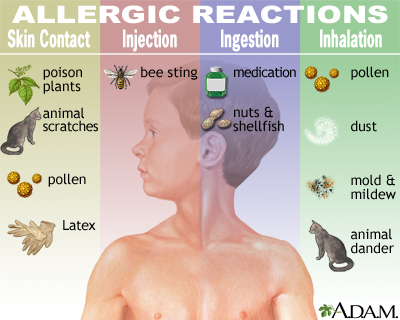
Auto-immunity
- Auto-immune illness occurs when the body attacks its own cells.
- Rheumatoid arthritis is an autoimmune disease that affects the body’s immune system.
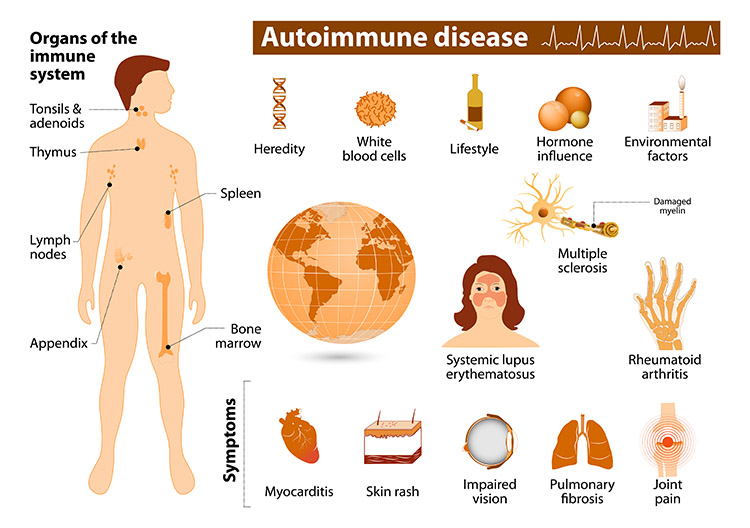
__Source__
Immune system: Lymphoid organs
- The lymphoid organs, cells, and antibodies make up the human immune system.
- Bone marrow and thymus are the primary lymphoid organs.
- Lymphocytes grow, mature, and differentiate into antigen-specific lymphocytes in this area.
- Spleen, lymph nodes, tonsils, Peyer’s patches in the small intestine, and appendix are secondary lymphoid organs.
- These are the antigen-reaction sites, and following proliferation, they become effector cells.
- The spleen functions as a blood filter. Lymphocytes and phagocytes are present, as well as a considerable number of erythrocytes.
- Antigens in the lymph or tissue fluid are trapped in lymph nodes.
- MALT (mucosa-associated lymphoid tissue): the mucosal lining of the respiratory, urinary, and digestive tracts accounts for half of all lymphoid tissues in the body.
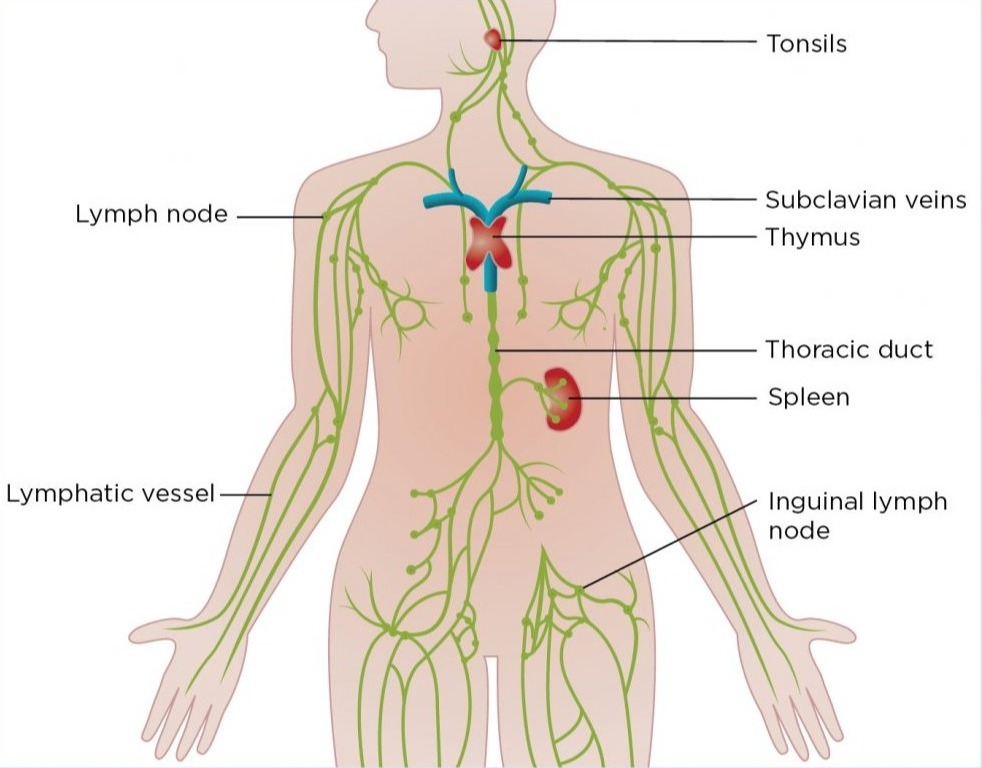
Source: Lymphatic system
]]>